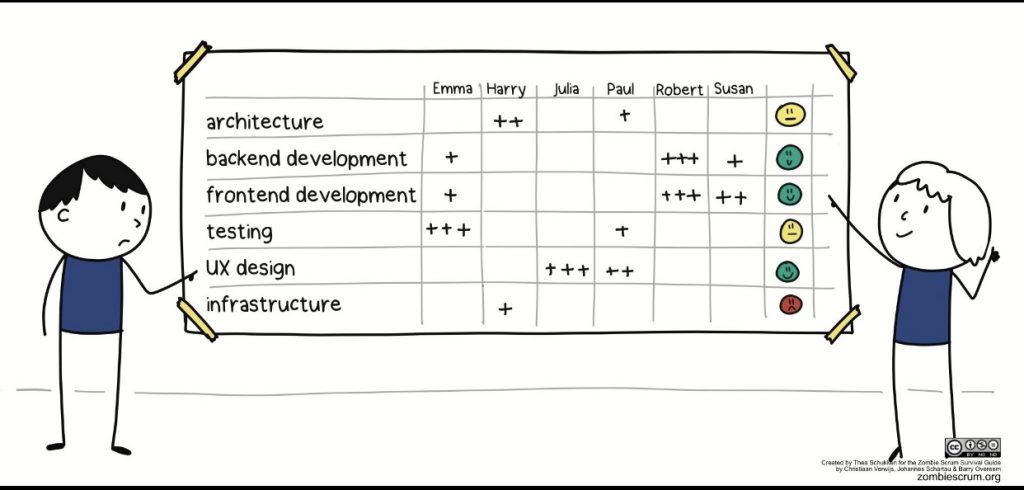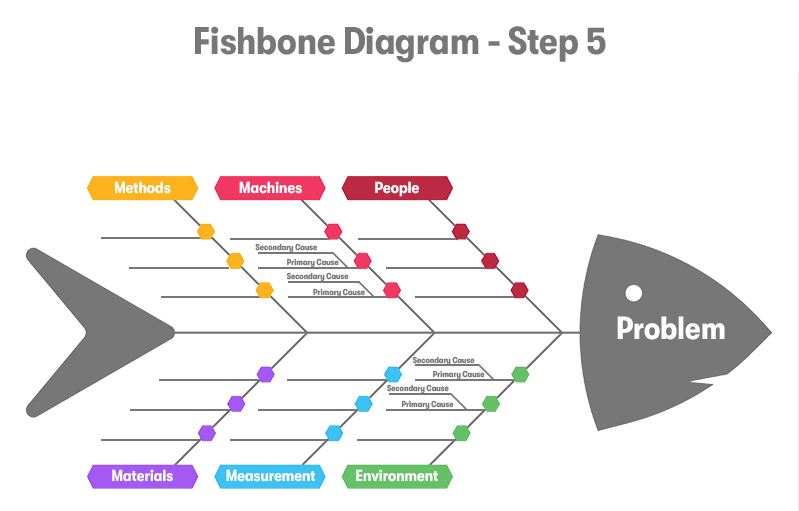Cross-functionality is the ability to combine the skills of team members to achieve a common goal.
For example, in a product development team, cross-functionality can help team members work with different technologies, understand customer needs, and ensure product quality. To improve cross-functionality, you can take the following steps:
• Identify the skills of each team member and create a skills matrix to know who can do what and to what level. For example, you could create an Excel spreadsheet with rows for team member names and columns for the skills needed for the product, such as HTML, CSS, JavaScript, React Native, Firebase, UX/UI design, testing, marketing, etc. Then, you can assess each team member’s proficiency with each skill using a rating scale from 1 to 5. You can ask team members to self-assess or rate each other. You can also use other tools like Trello or Miro to create the skills matrix.
• Encourage members to work together on common tasks instead of dividing work by expertise. Use methods such as pair programming, shared goals, and collaboration to enhance interaction and mutual learning. For instance, you could ask a web developer and a mobile developer to work together to create a new feature for your product. They can share source code, user interfaces, and the business logic of that feature. They can also resolve arising issues and support each other during development. In this way, they will learn new skills and understand each other’s work.
• Organize joint training activities like hackathons, where teams choose a relevant challenge and try to solve it using their skills. For example, you could host a one-day hackathon to encourage teams to create a new product or improve your existing product. You could provide some requirements or suggestions for the product, such as it must support web and mobile, must have online payment features, must have a user-friendly and appealing interface, etc. Then, you can have the teams present their products and vote for the best one. This way, teams will have the opportunity to experiment with new skills and learn from each other.
• Change the way work is organized from skill-based specialization to cross-functional teams, especially in complex and unpredictable environments. This will help reduce dependency and increase the flexibility of the team. For example, instead of having all testers, designers, marketers, and developers work separately and hand off tasks to each other, you could create cross-functional teams, where each team has at least one representative from each skill set. Then, you can assign each team a part of the product or a specific feature for them to self-manage and develop. You can also use agile methods like Scrum or Kanban to manage the work of the teams.
Some specific actions you can start with right now include:
• In the Retrospective, identify a skill that is lacking in the team and encourage at least three members to improve it in the next Sprint. For example, if you find that UX/UI design is an important skill but few people have it, you could ask three other team members to learn about UX/UI design and apply it to your product in the next Sprint.
• Organize a workshop in the next Sprint, where a member with high skill in a specific task shares their experience and guides others to do the same. For example, if you have a member who is very good at marketing, you could ask them to hold a workshop on how to create an effective marketing campaign for your product and help other members follow along.
• Limit the number of tasks in progress to no more than one-third of the number of team members and work together on those tasks as creatively as possible. For example, if you have a team of six people, you should only have two tasks in progress at a time. You could ask three members to work on each task and support each other during the process.
If you see any measures that can help develop the cross-functionality of your development team, feel free to share them here.



